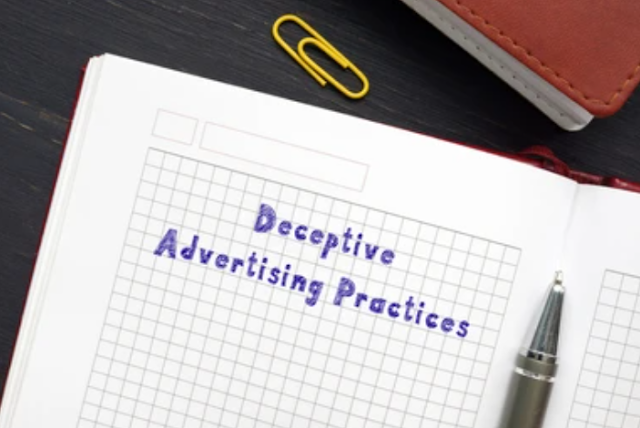Deceptive Advertising Practices: What Consumers Should Know
Deceptive Advertising Practices: What Consumers Should Know
Deceptive advertising refers to the use of false or misleading information in promotional materials to manipulate consumers and create a false perception of a product or service. These practices are unethical and can harm consumers by leading them to make purchasing decisions based on inaccurate or incomplete information. It is important for consumers to be aware of deceptive advertising practices to protect themselves and make informed choices. Here's a detailed explanation of deceptive advertising practices and what consumers should know:
False Claims:
Deceptive advertising often involves making false or exaggerated claims about a product or service. This can include false statements about the product's benefits, performance, ingredients, or effectiveness. For example, a weight loss supplement claiming to help consumers lose a significant amount of weight quickly without any effort would likely be making false claims.
Omission of Material Information:
Another deceptive advertising tactic is the deliberate omission of material information that would impact a consumer's decision-making process. Advertisers may leave out important details or hide potential drawbacks or risks associated with a product or service. For instance, a car advertisement promoting low monthly payments without mentioning the high interest rates or additional fees would be misleading consumers through omission.
Bait-and-Switch:
The bait-and-switch technique involves luring consumers in with an attractive offer, only to redirect them to a different, less desirable product or service. Advertisers may advertise a product at a discounted price or with appealing features but make it difficult or impossible for consumers to actually purchase that item. Instead, they push consumers towards higher-priced alternatives. This practice deceives consumers by manipulating their expectations.
Fine Print and Disclosure Issues:
Deceptive advertising can involve burying important information in fine print or making disclosures that are difficult to notice or understand. Advertisers may use small font sizes, rapid on-screen text, or unclear language to hide crucial terms and conditions. This practice is aimed at preventing consumers from fully grasping the implications of the offer or transaction.
Testimonials and Endorsements:
Advertisers sometimes use testimonials or endorsements from individuals who claim to have experienced positive results from a product or service. However, deceptive advertisers may employ fabricated testimonials or pay individuals to endorse their products without disclosing that it is a paid endorsement. This practice misleads consumers by presenting false experiences or opinions.
Comparative Advertising:
Comparative advertising involves directly or indirectly comparing a product or service to competitors. While comparative advertising can be informative, deceptive advertisers may make false or misleading comparisons to make their product appear superior. This can involve selectively choosing favorable comparisons or manipulating data to present a distorted view.
Puffery:
Puffery refers to exaggerated, subjective claims that are not meant to be taken literally. Advertisers may use statements like "the best," "the greatest," or "the most amazing" without providing objective evidence or substantiation. While puffery is generally considered legal, it can still mislead consumers by creating unrealistic expectations.
Consumer Protection and Legal Remedies:
Consumer protection laws, such as those enforced by the Federal Trade Commission (FTC) in the United States, aim to prevent deceptive advertising practices. The FTC regulates advertising and requires that advertisers make truthful and substantiated claims. Consumers who have been deceived by false or misleading advertising can file complaints with the relevant regulatory authorities and may be entitled to legal remedies, such as refunds or damages.
To protect themselves from deceptive advertising practices, consumers should:
- Be skeptical and critically evaluate advertising claims.
- Research products or services independently to gather unbiased information.
- Read the fine print and disclosures carefully.
- Look for objective evidence and reviews from reliable sources.
- Report deceptive advertising to relevant consumer protection agencies.
By staying informed and vigilant, consumers can avoid falling prey to deceptive advertising practices and make well-informed purchasing decisions.















No comments